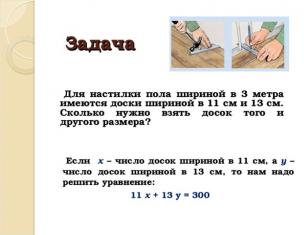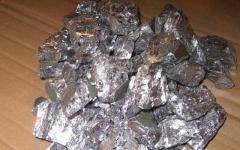The Ural meteorite distracted scientists for some time from another space object - an asteroid, which is approaching the Earth at these moments. According to calculations, it will approach its minimum distance to our planet at 23:20 Moscow time. This unique event will be broadcast live on NASA's website. Residents of Asia and Australia, as well as possibly some areas, will be able to see the asteroid Eastern Europe.
In a little more than 2 hours, the DA14 object will pass by the Earth at a distance of 28 thousand kilometers - this is closer than some satellites fly. If this asteroid weighing 130 tons and with a diameter of 45 meters collided with our planet, the explosion would be equal to one thousand Hiroshimas. There was even an assumption that the meteorite that fell in the Urals could be part of this space monster and that other, larger ones would follow it. However, most scientists do not see a connection with the DA14 asteroid and the Ural meteorite.
“As for whether Armageddon threatens us or not, it is now known for certain. All asteroids larger than one kilometer in diameter that bring such a catastrophe to the Earth on a large scale, they are all known and have well-known orbits, they are all cataloged and observed “There is no danger from them,” assured Lidia Rykhlova, head of the space astrometry department at the Institute of Astronomy of the Russian Academy of Medical Sciences.
While we were following large asteroid, a meteorite that fell in the Urals was overlooked. However, it was almost impossible to see it before entering the atmosphere - neither civilian observatories nor missile defense radars can do this - the size is too small and the speed is too high. The military says that even if such a meteorite is discovered, destroy such objects modern systems Air defense is not yet capable. Already in retrospect, scientists derived data from a celestial body that had already fallen in the Urals - mass several tons, speed 15 kilometers per second, angle of incidence - 45 degrees, shock wave power - several kilotons. At an altitude of 50 kilometers, the object collapsed into 3 parts and almost completely burned up in the atmosphere.
“No more than 10 meters in diameter, it flew at supersonic speed and therefore generated a shock wave. This shock wave caused all this destruction, people were injured not by meteorite fragments, but by the shock wave. Now, if a supersonic plane would have passed on the same altitude, for example, God forbid above Moscow, the destruction would have been the same,” said the deputy director of the State Astronomical Institute. Sternberg Sergey Lamzin.
Any space object, which reached the Earth's atmosphere and left a trace in it, scientists call it a meteorite. As a rule, they are small in size and, moving in the air at a speed of several kilometers per second, completely burn out. And yet, about 5 tons of cosmic matter fall to Earth every day in the form of dust and small grains of sand. Almost all space guests come to us from the so-called asteroid belt, which is located between the orbits of Mars and Jupiter.
"Some kind of dump solar system, where all the debris is concentrated. Collisions between asteroids occur in this belt. As a result, some debris is formed that can acquire an orbit that intersects the Earth’s orbit,” said Mikhail Nazarov.
However, some scientists believe that it was not a meteorite that fell near Chelyabinsk. They are confident that no one will ever find any debris, just as they did not find the debris Tunguska meteorite. We are most likely talking about a cooled comet, which consists of frozen gases.
“If the nucleus of a first-generation comet invades the Earth, then it burns up almost completely in the Earth’s atmosphere, and it is impossible to find any remains on the surface. This is similar to the Tunguska phenomenon, when no remains of the body were found, but there was a large fall of forest over a large area and the trees were all heavily charred,” said Vladislav Leonov, a researcher at the Department of Space Astrometry at the Institute of Astronomy of the Russian Academy of Sciences.
Nevertheless, the search for meteorite remains near Chelyabinsk continues. At the same time, not only rescuers and scientists are searching; now dozens of meteorite hunters have already rushed to the area of the supposed fall. The price of some of them on the black market can reach several thousand rubles per gram.
NASA detection systems were unable to detect the approach of asteroid 2019 OK to Earth. It became known when the distance between it and the Earth was no more than 65 thousand kilometers. The asteroid was spotted by observatory staff in Britain. The diameter of asteroid 2019 OK is comparable to the size of a football field. After this incident, NASA's tracking system was criticized by experts.
Previously, an asteroid larger than the Cheops pyramid was approaching the Earth, RIA Novosti reported this with reference to NASA data. The diameter of asteroid 2019 OU1 is 160 meters, which is 20 meters larger than the famous Egyptian pyramid. On August 28, 2019, it approached Earth 40 times closer than Venus and missed our planet at a distance of about a million kilometers.
But what if a dangerous space object fell to Earth? Its size is capable of triggering a series of large tsunamis or the complete destruction of one of the European countries. A smaller, but also potentially dangerous, celestial body passed at a distance of 7.3 million kilometers on July 25, according to the ISON system.
What meteorites and asteroids have already fallen to earth?
Russia has already become a place for meteorites and asteroids to fall. The first case was recorded on June 17, 1908 in the Krasnoyarsk Territory, near the Podkamennaya Tunguska River. The power of the explosion when the Tunguska meteorite fell was 40-50 megatons, the shock wave felled 2000 square kilometers of forest. Glass was broken 200 kilometers from the epicenter, and seismic vibrations were recorded at stations in cities such as Irkutsk, Tashkent, Tbilisi and Jena (Germany). The most interesting thing is that the meteorite fragments were never found.
Wikipedia.org
The most “severe” case occurred on February 12, 1947, near the village of Beitsukhe in the Primorsky Territory. The weight of the fragments found was 60-100 tons, and the body itself had an iron composition. The Sikhote-Alin meteorite, as it was nicknamed because it fell in the mountains of the same name, it split in the atmosphere and scattered to the ground in the form of a meteor shower. Now its fragments can be seen in the Kaluga Planetarium.
The recent fall of fragments of an asteroid, which is about 4.5 billion years old, occurred in the territory Chelyabinsk region February 15, 2013. The fall of fragments of the Chelyabinsk meteorite was accompanied by strong shock waves, which, according to NASA estimates, amounted to 300-500 thousand kilotons. The largest fragment, weighing 654 kilograms, was recovered from the bottom of Lake Chebarkul.
 Fragment of the Chelyabinsk meteorite.TASS / Artem Korotaev
Fragment of the Chelyabinsk meteorite.TASS / Artem Korotaev
As a result of meteorite fragments falling to the ground, 1,615 people were injured - most of them from fragments of windows and other structures provoked by the blast wave from Chelyabinsk. Buildings were damaged for 490 million rubles, and general damage amounted to almost one billion. This celestial body was not discovered before it entered the Earth's atmosphere.
Now imagine how much damage the fragments of fairly small meteorites caused. What could happen if asteroid 2019 OU1 changes its trajectory and still falls to the ground?
How to escape when an asteroid falls to Earth?
According to scientists, throughout its existence, the Earth has taken on at least six large asteroids. This is evidenced by the huge craters that exist on our planet. The largest is located in South Africa, its diameter is 300 kilometers! This is 6% of total area African country. It is logical that an asteroid collision with the Earth can occur in the 21st century. How to behave if a catastrophe on a planetary scale turns out to be inevitable?
- Find shelter. All-Russian Center public opinion(VTsIOM) conducted a survey on the topic nuclear war and found out that 71% of Russians do not know about the existence of specific bomb shelters in their city. Only 15% know where to hide, but most of them are men over 35 years old. This means that people simply will not understand where to run if a disaster occurs. You should look where in your city or locality there is a bomb shelter. Big cities Where there is a metro it’s easier. You can always take the subway, but the capacity of metro stations is small, especially those with one exit and no transfer points.
- Take necessary things with you. This can be warm clothes, medicines (antiseptics, bows, painkillers, anti-inflammatory), water, non-perishable food (cereals, canned food, butter, sugar, salt, powdered milk), hygiene products, threads, a flashlight, a personal protection, important documents.
- Stay away from windows and other glass structures. If you see a cosmic body flying in the sky or receive a warning about danger, move away from the windows! The fall or rupture of a meteorite/asteroid in the sky will provoke a shock wave that will certainly destroy all glass partitions. You may be injured by flying debris and even be seriously injured.
Every year, scientists scare the world with yet another hypothesis. natural disaster. Today, astronomers report that a large asteroid is flying towards Earth. It is already known that the cosmic body will pass at a dangerously close distance from our planet, and many experts even predict a collision.
It should be clarified that while scientists are not sounding the alarm, and all data is presented in the form of approximate calculations, cosmic bodies are still not subject to human control, and anything can be expected.
So let's think about what could happen if an asteroid will fall to Earth in 2017, what destruction and cataclysms await all humanity. Are there any predictions from famous clairvoyants about the fall of a meteorite in the near future? Let's also remember past cases of falling celestial bodies to Earth.
The end of the world is predicted
Let us recall that one of the most famous seers, Matrona of Moscow, clearly saw the end of the world before her death. She said that 2017 is a dangerous year; it was during this period that the soothsayer saw that thousands of people would die without wars, that a celestial body would fly from space and wipe out almost all of humanity from the face of the Earth.
In their last words Matrona bequeathed prayer to people, she insisted that people pray, since the end of the world is very close, and the soul can only be saved by prayer. The saint saw how much grief humanity would have to endure. According to her visions, in February earthly life will come to an end: many people will die, the dead will lie on the ground, and in the morning everything will go underground. What the great soothsayer had in mind is still unknown; perhaps she saw that a meteorite was about to fall on the planet.
However, what do scientists say about the alleged catastrophe? Do they confirm or refute the clairvoyant’s version?
Specialist calculations
According to experts, January and February 2017 will be rich in various astronomical phenomena. In particular, scientists suggest that comet Encke will show its “tail” in all its glory in February of this year.
The last time astronomy lovers were able to observe the large tail of this celestial body was in 2013.
It is unknown whether Encke will “fluff” his tail this time, but scientists claim that when flying close to the Sun, the comet will begin to heat up, as a result of which its tail becomes larger and brighter. Experts hope that the 2017 comet will surprise everyone with its beauty and come closer to Earth so that it can be seen with the naked eye.
However, experts are most concerned about the date February 10, 2017; it is on this day, according to astronomers, that our planet will dangerously approach the large asteroid Phaeton. Scientists have long been observing how this huge cosmic body approaches the Earth; Phaeton itself was discovered back in 1983. During the study of the asteroid, scientists were able to get ahead of its size. As it turned out, its diameter is about 5.1 km, and its rotation period is 3.6 hours. The flying object attracted scientists with its orbit, which is atypical for asteroids. The fact is that Phaeton is classified as an Apollo group, but it can approach the Sun at a record close distance - about 21 million kilometers.
Experts believe that such a trajectory is more typical for comets, and perhaps the asteroid is nothing more than the nucleus of a comet that has lost its tail.
Phaeton crosses the orbits of 4 planets in the solar system, and it is on February 10, 2017 that it will come as close as possible to Earth. Some scientists believe that our planet is not in danger, but some skeptics think that an asteroid could fall on the blue planet.
Let's hope that no disasters will happen, and astronomy lovers will simply enjoy watching the next space object. Indeed, in the event of his fall, the scale of the tragedy is incommensurable. After all, we should not forget how much destruction was caused by the tiny Chelyabinsk meteorite, which before burning in the layers of the atmosphere had a size of only 17 meters.
At the same time, many residents of the Earth are worried that if experts have already seen the meteorite fall in Chelyabinsk, then they may not see an even larger object from space, which could cause enormous destruction.
Space guests
Let us note that throughout the history of mankind, quite a few cases of falling celestial bodies have been recorded; let us recall the most famous of them.
Goba. This is one of the oldest and largest meteorites, which fell to Earth before our era on the territory of modern Namibia. For millennia, the giant block was buried under the thickness of the earth, so the cosmic body was discovered only in 1920. According to scientists, at the time of its fall the object weighed about 90 tons, but during its stay on our planet its weight decreased to 60 tons. In addition, each of the tourists tries to take with them at least a small piece of this giant, so Goba begins to gradually “melt”.
Tunguska meteorite. In June 1908, residents observed a huge flaming ball; at an altitude of 10 km from the ground, the ball exploded, the force of the explosion was so powerful that it was recorded by instruments around the world. The power of the explosion was comparable to an explosion hydrogen bomb, and humanity was simply lucky that the meteorite was destined to fly past an uninhabited part of the Yenisei River basin. Before entering the planet's atmosphere, the weight of the space object could reach 1 million tons. When the meteorite fell, it destroyed several kilometers of territory, all the trees within a radius of 2 thousand kilometers were knocked down, and absolutely all the windows of a house were knocked out hundreds of kilometers away. Within a radius of 40 kilometers, animals and people were destroyed by an incredibly powerful blast wave. And for several days after the fall of the cosmic body, the sky and clouds glowed with an unusual color. However, the main mystery is that such a giant did not leave a large crater, as happens when such a huge object falls from space.
Meteorite Sikhote-Alin, Far East. In 1947, to the territory Far East A huge celestial object fell in the form of a meteor shower, which, as a result of entering the earth’s atmosphere, split into many pieces. The area of scattering of meteorite fragments exceeded 10 square kilometers, and the objects left more than 30 craters with a diameter of 7 to 30 meters on the ground. Then scientists managed to collect about 27 tons of debris from the celestial body.
Meteorite Sterlitamak. A giant object weighing 315 kg fell in the vicinity of the city of Sterlitamak in 1990, resulting in a crater with a diameter of more than 10 meters.
Chelyabinsk meteorite. Perhaps this is the most popular space object at the moment, which fell to Earth on February 15, 2013; its flight was recorded by several cameras. A powerful blast wave shattered all the windows in three hundred houses and injured more than one and a half thousand people. The weight of the largest fragment found by scientists was more than 500 kg; this object became one of the largest cosmic bodies that fell on our planet.
The diameter of the celestial body is about 40 meters
Western astronomers have discovered a space object twice the size of the famous one Chelyabinsk meteorite, a meeting with whom may take place in 2017. The scale of possible destruction may be significantly greater than in the latter case.
According to preliminary calculations by American astronomer Judith Rees of the McDonald Observatory of the University of Texas, the diameter of the new asteroid is about 40 meters, which, if it collides with the surface of our planet, will cause devastating damage several times greater than the consequences of the crash of a smaller meteorite in the Chelyabinsk region in February 2013, reports astronomical astrowatch.net.
A dangerous celestial body was discovered in October 2012 by an observatory in Hawaii. In the same month, he passed at a dangerously close distance from the Earth, 95,000 kilometers, which is equal to the distance to the Moon. Asteroid 2012 TC4 is expected to pass its closest approach to Earth on October 12, 2017.
Now experts are trying to establish the exact orbit of the asteroid and calculate its chances of a collision, which so far, apparently, are quite low - only 0.00055%, but, nevertheless, they still exist.
According to European Space Agency expert Detlef Koshni, the chances of a meteorite colliding with the Earth are minimal—“one in a million.” The same point of view is shared by Makoto Yoshikawa from the Japanese Aerospace Exploration Agency.
Let us recall that two years ago, on February 15, 2013, the largest known celestial body to fall to earth since the Tunguska meteorite in 1908 took place.
The flash of light was visible in neighboring regions, as well as in neighboring Kazakhstan. The shock wave broke glass in more than 7 thousand buildings. There was no emergency human casualties, but more than 1.6 thousand people were injured, 52 people were hospitalized.
Scientists estimated the mass of the object before entering the atmosphere at 13 thousand tons, and its size at 19.8 meters.
A few minutes after the explosion (according to eyewitnesses, from 77 seconds to three minutes or more, depending on the distance), a shock wave came to the ground. The impact zone of the shock wave on the surface was about 130 kilometers long and 50 kilometers wide.
The area affected by the shock wave was 6.5 thousand square kilometers.
Only 4-6 tons of meteorite matter reached the ground, which is 0.03-0.05% of the original mass, while 76% evaporated and the rest turned into dust.
A study of the meteorite substance showed that the Chelyabinsk asteroid was one of the ordinary chondrites of type LL5, its age is about 4.45 billion years, approximately at the time of birth it experienced a powerful collision with another object. Chemical analysis showed that traces remained in the meteorite organic compounds containing sulfur and oxygen.
Witnesses of the event interviewed by scientists said that it was painful for them to look at the car. About 25 people out of 1.1 thousand respondents reported that they received burns, 315 felt heat, and 415 felt heat from the fireball's radiation.
The meteorite, called "Chelyabinsk", turned out to be the largest known celestial body to fall to Earth since the Tunguska meteorite in 1908. Such an event occurs on average once every 100 years.
The “Chelyabinsk event” also became significant for politics: it forced the authorities of the United States, Russia and the European Union to once again return to the problem of the asteroid-comet danger.








